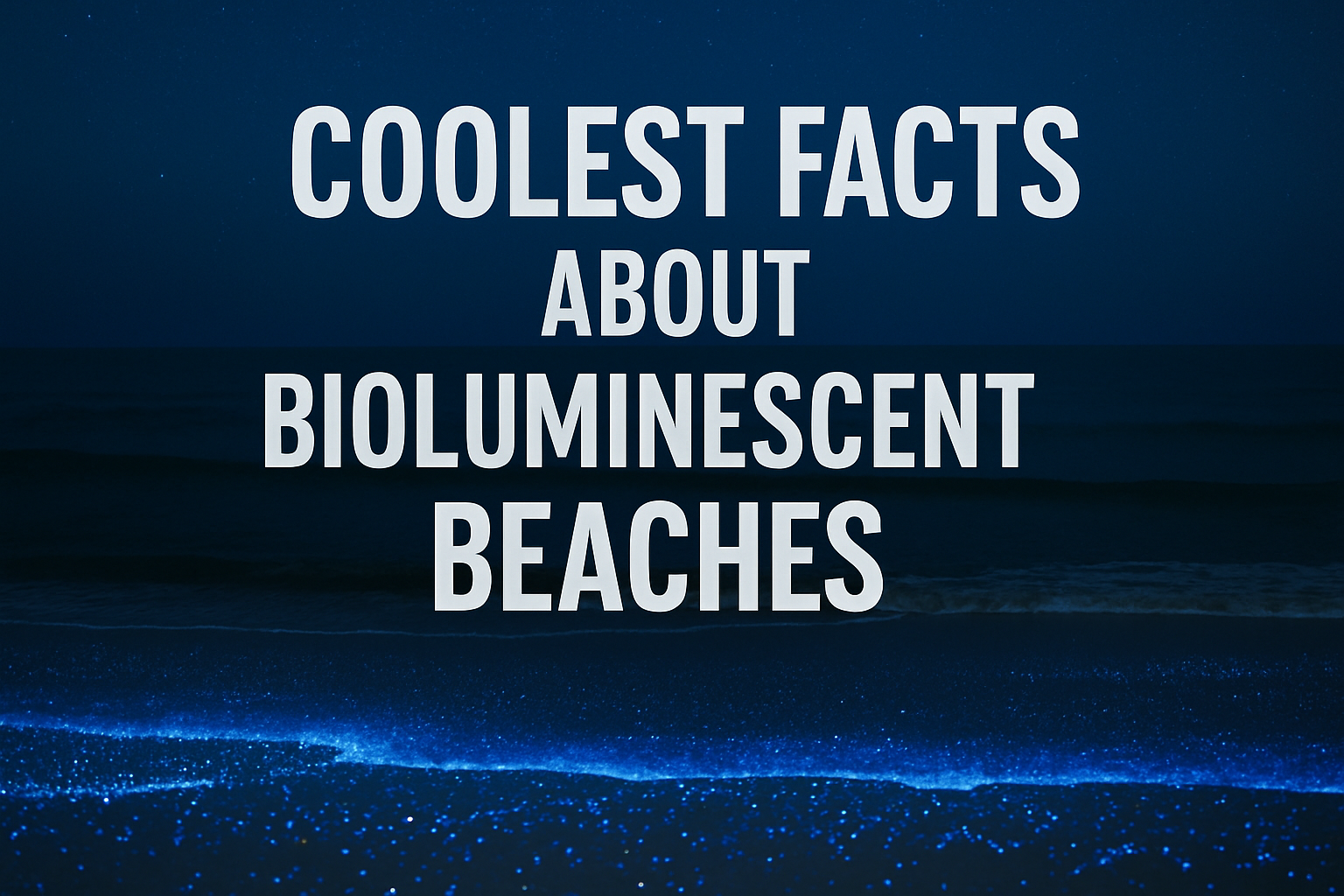What are Bioluminescent Beaches?
One looks amazingly spectacular and fascinating; it is bioluminescent beaches. These special coasts are lit by magical blue or green light particularly at the night time. It is not an artificial light, nor a mechanism of his or hers, it is something that is produced by the microscopic organism living in the water and which produces the light as the reaction of chemical factors. The given phenomenon, known as bioluminescence, is visible in different regions of the world, and every place provides a bit different experience. The responsible organisms are the phytoplankton, algae, and some types of the jellyfish, and their glow is most commonly triggered by the movement, i.e., by the waves, movement of boats, or a simple splash.
What is the mechanism of Bioluminescence?
A natural phenomenon of light emission by an organism in which an organism makes and releases light is called Bioluminescence. It occurs as a consequence of the reaction of a light-producing molecule, known as luciferin with oxygen in the presence of another enzyme Luciferase. Light thus produced in the reaction does not require a lot of heat hence the reason why it is termed as a phenomenon of cold light. Among the marine life, it is usually applied in the forms of camouflage, communication or prey attraction. The living things (in bioluminescent beaches) react to any water disruption. As you wade through the surf or paddle in the sea millions of little animals respond to the stimulus by gleaming with a trail of movement.
What are Bioluminescent Beaches Located?
All around the globe especially in warm coastal waters lays the bioluminescent beaches. Mosquito Bay of Vieques, Puerto Rico is one of the most renowned places with the Guinness world record recorded as the brightest bioluminescent bay in the planet. Other beautiful places are in Toyama Bay in Japan where it has glowing firefly squids along the shores and Laguna Grande in Fajardo in Puerto Rico. Glowing waters are sometimes observed in Florida Indian River Lagoon and even in some sections of the Californian coastline in the United States. Maldives is another place with the most beautiful bioluminescent beaches, where the sea shore glows as you step on it to the extent that it seems like a dream.
The Reason Why These Beaches Are Listed as Glowing
The light is created because billions of plankton-like organism known as dinoflagellates glow, which is a kind of phytoplankton. Mechanical stimulus that causes these microorganisms to produce a short burst of light is waves, paddles or a movement of a human being. The causes behind such behavior remain under research yet scientists suppose that this may be some kind of defense. The light can startle the predators or even confuse them or even attract more bigger predators to feed on the attackers. Basically it is a burglar alarm in nature.
When is best time of year to visit Bioluminescent Beaches?
Everything is a matter of the time when it is possible to see bioluminescent beaches. The viewing is also ideal under the new moon nights when the sky is darkest. The glare of the moon light or the cities may create light pollution to obstruct the view of the bioluminescence. The brightness and the visibility are also affected by the warm temperatures, calm waters, and a particular tide. The glow is most likely to be seen during late spring to early autumn in most of the places. There also are beaches which are active all year around and others which are only functional at certain months.
The Role of Climate and Weather
The weather conditions have serious influence on the presence and intensity of bioluminescence. Bioluminescence organisms depend on rain window, heat as well as nutrient level. As an example, bioluminescence may increase in the presence of nutrient-enriched runoff that may be spawned by heavy rains and feed the phytoplankton. Unfortunately, such fragile ecosystems can be also disrupted because of too much rain, or by the storms. Climatic changes are also emerging to be a serious issue because the increase in temperatures in the oceans and pollution might kill the microscopic life that gives the glow. This notwithstanding, some species appear adaptive and they still survive in variable environments.
Human Interaction and conservation
Though visiting a bioluminescent beach or kayaking in glowing waters is something that you will only do once in your life, it is necessary to take into consideration the fact that bioluminescent bays and beaches are delicate ecosystems. The organisms can be damaged through sunscreens, boat oils and physical disturbs. Control measures on tours have also been applied in most of the famous sites by limiting the number of tourists visiting the place, prohibiting the use of chemicals which pollute the environment as well as ensuring that observations are quiet to preserve the natural habitat. To save the beauty and the biodiversity of these glowing marine ecosystems to the future generation the important thing is conservation.
Bioluminescence in Other Marine Life
Bioluminescence has been observed in a number of additional marine organisms such as: jellyfish; comb jelly; bivalves; squid; octopuses; cuttlefish; and sea cucumbers.
Although media usually draws attention to beach and bays, bioluminescence is common in the ocean. Anglerfish, jellyfish, squid and shrimp fish are deep-sea organisms taking advantage of bioluminescence. Others apply it in camouflage, some in hunting and some in courtship. Actually, bioluminescence functions of more than 75 percent of deep-sea animals are considered. Scientists have been interested in the phenomenon over decades; numerous experiments were conducted on the way it can be applied in various situations such as medical imaging, military camouflage, or even sustainable lighting.
Cultural and Mythological Significance
Glowing waters have brought about myths, folklores, and even mystical beliefs too. Ancient mariners referred to milky seas; strange waters, that appear to shine under the moon traits that conceal the presence of evil. Bioluminescent activities were treated by most cultures as omens or blessings. Today these beaches remain awe and wonder beaches and people all around the world visit these beaches in a quest to have a mystical journey. The light is usually explained by local legends: they say that those are dancing magic spirits or sea fairies under the water.
Conclusion
Bioluminescent beaches are not only a lovely and natural phenomenon; they are a real ecosystem that is the manifestation of the whole fragile nature. These are glowing waters that give an out of this world experience to the point where science begets magic. it does not matter either you are seeing the waves glow in the sky when the moon is down or you are plunging your hand into glittering waters, the wonder of nature is unique. It only makes one appreciate it all the more when you know about the science behind it and after all, when all of this will be done responibly and concentrating on conservation all of us will be able to say that future generations will also get to walk though these living, glowing shores.




